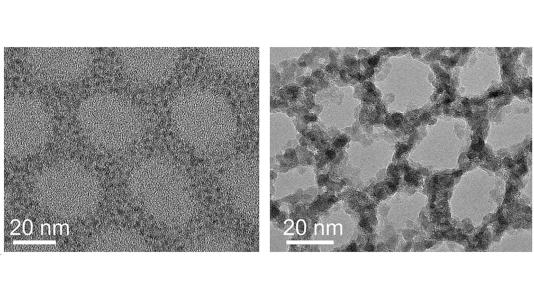
Scientific Achievement
Synchrotron X-ray characterization reveals the structural evolution of inorganic cluster growth and crystallization that results from SIS in polymeric templates.
Significance and Impact
A new characterization approach provides fundamental insights into the electrical conductivity of nanoscale electrodes. New insights may afford an efficient route to 3D arrays of precise-atom-number clusters.
Research Details
- The grazing incidence geometry used for X-ray total scattering pair distribution function (GI-PDF) overcomes long-standing challenges of achieving high-resolution PDF for thin films.
- Even after annealing, In2O3 nanocrystal structures are shown to depend on synthesis conditions, offering new tunability.
- This synthesis method has important applications in water treatment, lithography, separations, and optical coatings.
Work was performed at Argonne National Laboratory.
Argonne National Laboratory seeks solutions to pressing national problems in science and technology. The nation’s first national laboratory, Argonne conducts leading-edge basic and applied scientific research in virtually every scientific discipline. Argonne researchers work closely with researchers from hundreds of companies, universities, and federal, state and municipal agencies to help them solve their specific problems, advance America’s scientific leadership and prepare the nation for a better future. With employees from more than 60 nations, Argonne is managed by UChicago Argonne, LLC for the U.S. Department of Energy’s Office of Science.
The U.S. Department of Energy’s Office of Science is the single largest supporter of basic research in the physical sciences in the United States and is working to address some of the most pressing challenges of our time. For more information, visit https://energy.gov/science.